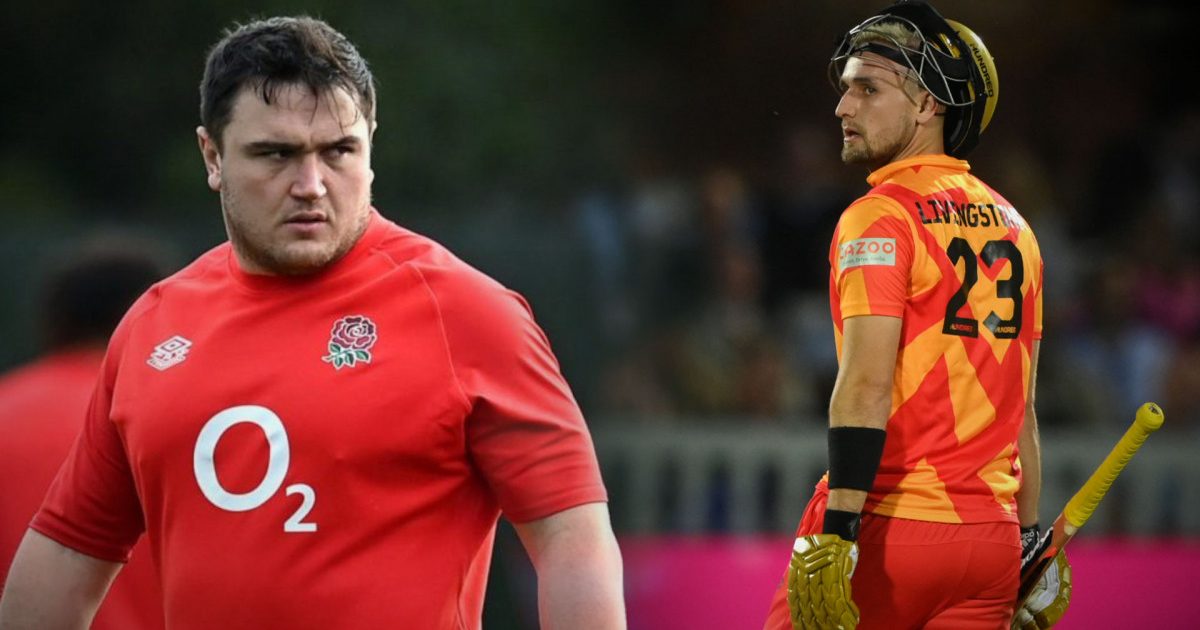What can rugby learn from The Hundred? Nothing...

Nothing. We won’t listen.
That’s where I was going to stop this article. It would have been a salty, pithy jibe at this game of Rugby Union we so love much. A game so complex and confused by everyone who thinks they know better. We could learn things but we don’t because we’re too busy telling others what we know.
The Hundred was a big risk. It was a large wager of ECB money, laid on a bet in a crowded marketplace. Before it began, the naysayers lined up. It wouldn’t, couldn’t, shouldn’t work. But somehow it did.
Of course, it didn’t work for those it wasn’t really for. Those with long county beards or one-day goatees, this wasn’t really for them. One in every five tickets for the hundred was purchased by a child. Another one of those five tickets was taken by a woman. You don’t find many of them around a first-class boundary rope. This game spoke to a new audience.
Its crudeness made county folk shudder. The colours, the countdowns, the “Stars in their Eyes” walkouts: all in stark contrast to a sport we loved for its purity, its grace; its pitch-perfect silence. But the youngsters donned the garish hues with pride, smiling and laughing in orange and electric blue. It was also on free to air TV. The ECB forgoing the no doubt bigger pot of cash to make sure it was available for anyone to watch it. The final drew in 2.5million on BBC. 1.6million watched the first women’s game. 2.1million watched Ben Stokes’ Ashes heroics on Sky back in 2019. A moment that did wonders for Test Match Cricket.
The Hundred broke a pretty complex equation down into a relatively simple sum: balls bowled versus runs scored. Placed conspicuously in each corner of the screen, the rising and falling pillars were gauche in their simplicity. Batsmen went in and tried to score as many runs as possible. Then the other side got a go. It was so straightforward it was impossible to not know what was going on. People who didn’t really understand cricket understood The Hundred.
The live events were a roaring success. Yes, many tickets were given away but fans still turned up, and then went back for more. 90% capacities for the tournament’s 31-day run was hit. That’s an extraordinary feat, even before we get into the stats around record crowds for finals.
Yes, I’m sure you can go and find problems and highlight things that need improving but as far as speculative punts go, this one came home. Cricket spent but subsequently accumulated a huge amount. Participation levels are reportedly up across clubs in the UK already. People who previously did not mention cricket in restaurant conversations are recounting the fun of seeing colourful batters swipe sixes and get skittled. It worked. It is not the end of the road but as a first step, it was a good one.
So what can rugby learn? A lot. Maybe the traditional game is too complex. Maybe it’s too nuanced and multi-layered to bring in new fans. Maybe the games could be shorter and a little easier to follow; slightly different rules with the emphasis on running with the ball. Maybe there could be a little more razzmatazz and music for young fans.
Maybe there could be a new set of teams from geographical areas made up of the best players in that area. Maybe the whole thing needs to just take one month, maybe we should give lots of tickets away and just get loads of people into the grounds. Maybe men’s and women’s teams could play one after the other and one ticket would cover both or all the games. Maybe there could be extra points available for some individual skill competitions on the night; imagine a few ‘Superstars’ type competitions to watch at halftime! Maybe each team can have a ‘two-minute titan’ who can be used at any point during the game to give you a brief one-player advantage – they enter the fray to a fanfare and wear a special Day-Glo scrum cap. Maybe it could be sold for not very much money to FTA TV and pumped into homes at prime time slots. Not a seven or fifteen aside version, something in between. Ten aside for fifteen-minute halves. Adapted rules to keep the ball in play and people rewarded for quick thinking. No tackles above the waist. Two-man rucks, maximum. Squads of twenty with every player having to take part in each game unless injured. Famous coaches and media fronts for every franchise. Daft kits in crazy colours. Free popcorn for everyone and a specially adapted pink ball, versions of which are on sale for very little money at each game. It would take a large investment, lots of speculative pounds spent on the hope that it would work. We wouldn’t get everything right the first season but it could be brilliant.
When would we do it? Maybe over the summer. Replace these meaningless international games and grow our game. Properly spend money on making more people actively engaged with the sport that we love so much. A sport that is heading in the wrong direction. Headed the way cricket was. Before the Hundred started singing.
Man, I hope we were listening.
'Someone offered me to come and have a look at buying Gloucester Rugby Club, I had a little look a few years back. But the business model just doesn’t work'@Bournemouth7s founder @DodgeWoodall talks to @heagneyl ??? abt why rugby struggles to turn profit https://t.co/1Gn2lyMq4G
— RugbyPass (@RugbyPass) August 29, 2021





























